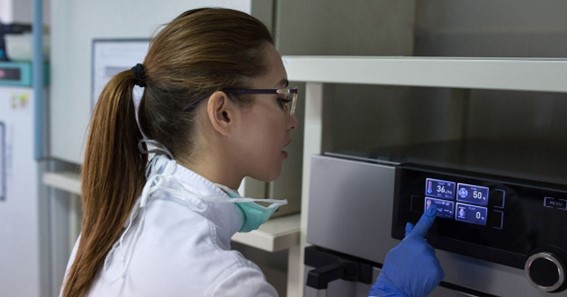Whether you’re growing cells or candling eggs, a lab incubator is an essential piece of equipment. Choosing the right one can help ensure that your samples are protected, that contamination occurs less frequently, and that it is easy to sterilize and decontaminate. The cooling your incubator uses is an essential factor to consider. Compressor-based incubators can use harmful refrigerants, while thermoelectric/Peltier-based lab incubators are more energy efficient and eco-friendly.
Reduced Temperature Fluctuations
A chilled incubator is a lab essential for cell cultures, embryos, plants, and microbiology samples. They provide stable, contaminant-free environments optimized for either growth or storage, and many lab incubators have additional features to enhance results like heating, agitation, and humidity control. They offer various control options, from traditional thermal conductivity sensors to infrared sensing technology. Many laboratory incubators come in different sizes and capacities to suit the specific needs of your work. They can be air- or water-jacketed and insulated with fiberglass or foam to ensure even temperature distribution. Some models feature ports and outlets to allow equipment like stir plates or shakers to be used inside the chamber while it’s running. Refrigerated incubators such as the Heratherm unit use no harmful refrigerants and rely on Peltier technology for energy efficiency. This makes them ideal for pharma, food, and microbiology labs that require precise temperatures. They also feature inner glass doors for viewing without disturbing the sample environment.
Less Heat Loss Through the Door
Incubators are used to cultivate microorganisms and cells in laboratories for experiments. To allow optimal growth, they can control different environmental factors, such as temperature, humidity, airflow, and CO2 levels within an isolated environment. When an incubator door is opened, heat can escape through the insulation and may disrupt the cell culture’sculture’s temperature settings. This can cause an unstable temperature inside the incubator and lead to errors in data collection. However, a refrigerator incubator has a more even and stable interior because of the water jacket that circulates it. Water has a higher thermal mass than air and retains heat four to five times longer, making it a better buffer against outside temperature fluctuations. This also reduces the evaporation of the culture, which can negatively impact results.
Less Sterilization Needed
Incubators require sterilization before and after use to ensure the samples inside are not contaminated. They can be sterilized in an autoclave or using a cold water spray. Regular cleaning of the interior also helps to reduce contamination. This includes changing the water pan regularly and cleaning all nooks and corners. A water-jacketed incubator has a large thermal mass, which can help keep temperatures stable. This is especially important when a laboratory has multiple temperatures for different methods. Incubators can also be sterilized using a germicidal UV light or high-heat decontamination cycles. The ultraviolet rays emitted from the UV light denature microbial genetic material, while the hot, moist air of the decontamination cycle destroys contaminants in the interior chamber of the incubator. This makes it easier to keep the inside of a chilled incubator clean for sample incubation.
Faster Growth
Lab incubators provide controlled conditions for various applications like zoology, microbiology, and pharmaceutical testing. They help create the ideal cell and tissue sample growth environment by maintaining optimum temperature, humidity, carbon dioxide, and oxygen levels. However, if the environment is too cold, cell growth will slow or stop; sensitive proteins can denature if it’s too hot. Incubators have many options allowing you to control CO2, oxygen levels, and temperature.
However, many of these features can be complicated and require specialized training. Cooled incubators can reduce these hassles by providing a more straightforward, efficient, and cost-effective option for adjusting temperatures. The cooling system is based on Peltier technology that uses the same thermoelectric assembly to heat and cool. This results in a compact design that’s easy to clean and doesn’t use compressors or CFCs. In addition, the incubators come in various sizes to accommodate your lab space.

